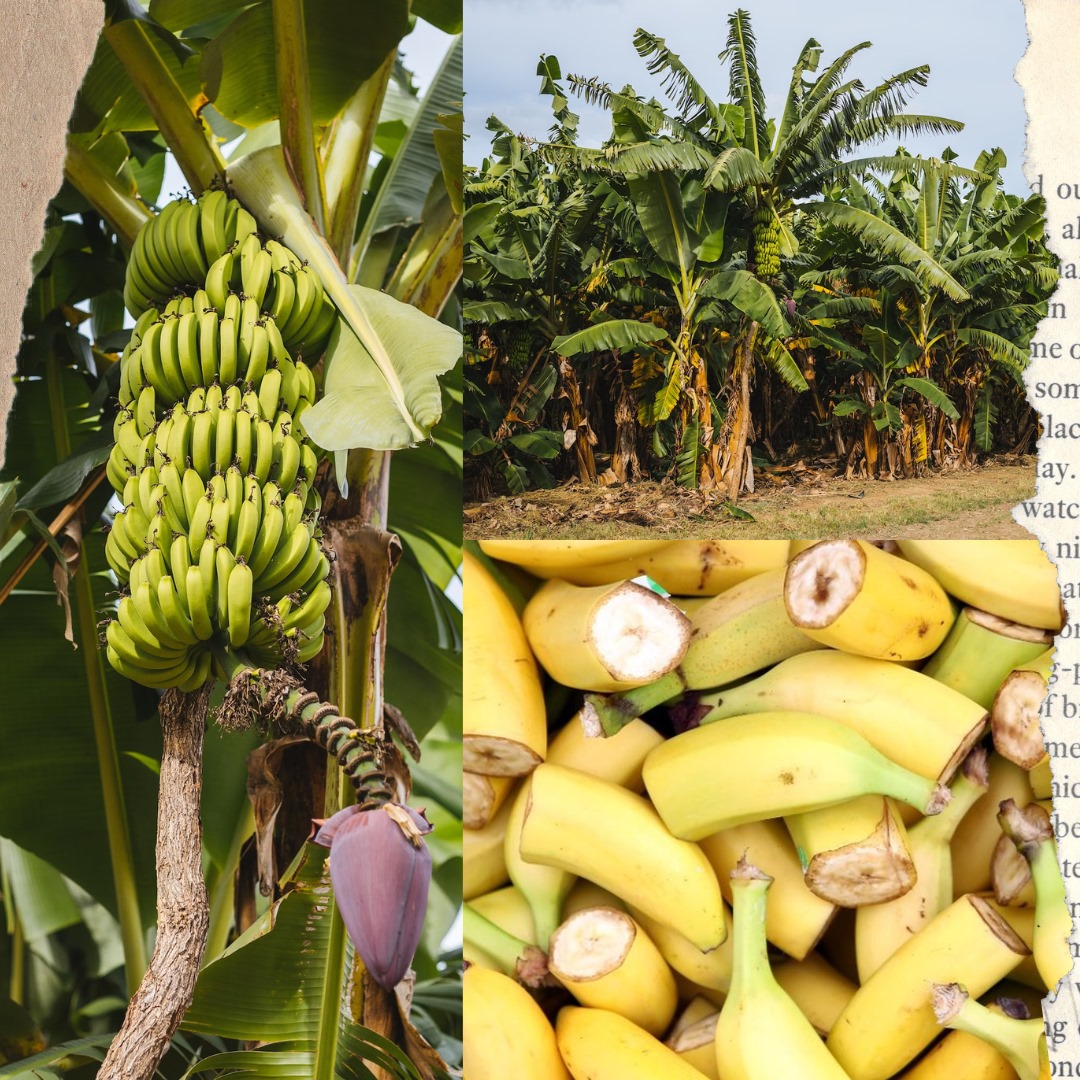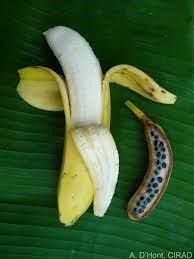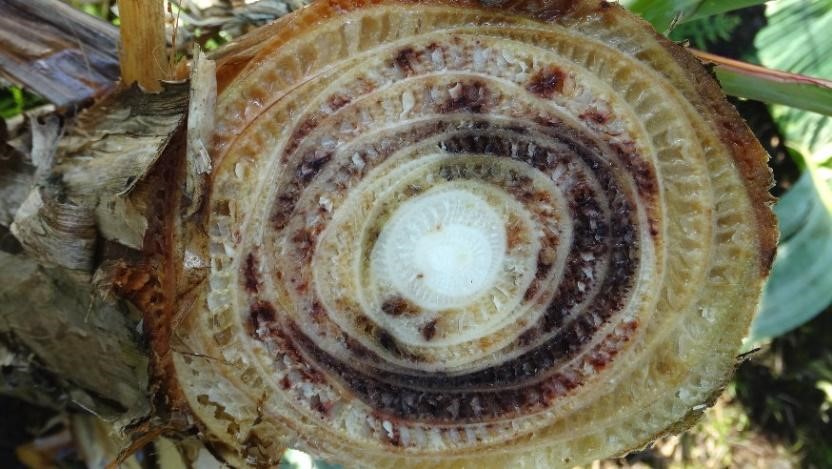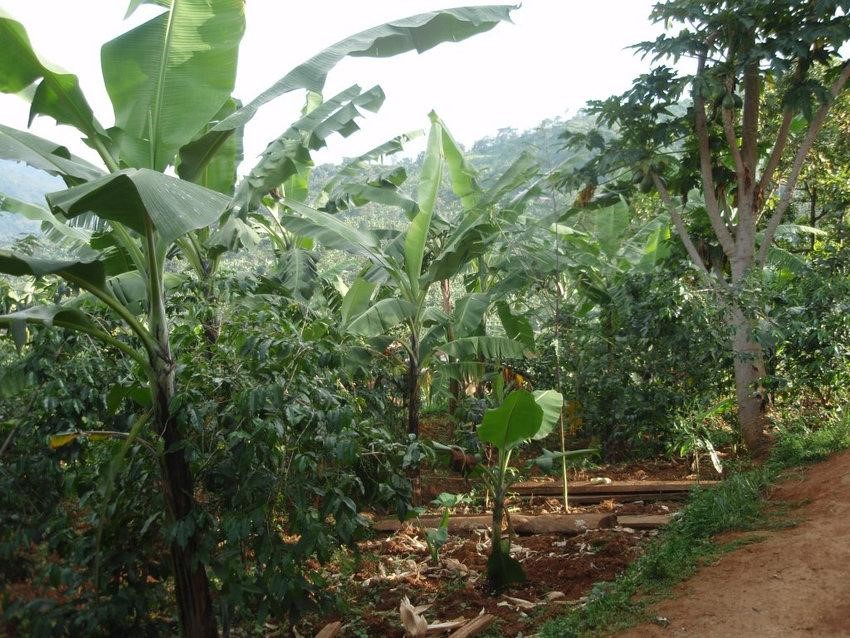Panama Disease: Supermarket Banana at the Brink of Extinction

Written by: Moritz List
As the most consumed fruit in the Netherlands, bananas have become an essential breakfast component, midday snack, or smoothie ingredient for many of us. The demand for the tropical fruit is even rising, because of an increasing focus on a healthy lifestyle. Many of us are unaware of the threat banana plantations are facing worldwide that could drive the sweet portable energy snack to extinction… yet again.
The Supermarket Banana

+of+the+banana.
For a little bit of background, bananas, as we find them today on the shelf of every supermarket, are a highly domesticated fruit. They are very different now from how bananas used to look before they fell into the hands of humans more than 7,000 years ago. While domestication made bananas easier to eat by reducing it’s seed content, it has also created sterile fruits. This means that bananas cannot reproduce on their own anymore.
As a result, banana plantations worldwide are nothing more than armies of genetically identical clones. The most popular of these clones is the Cavendish banana, which has quickly become the supermarket banana, accounting for more than 90% of all banana exports worldwide. However, a fungal parasite is now targeting the Achilles heel of the Cavendish banana, threatening Cavendish plantations worldwide.
fruit
The Indestructible Banana Killer

Fusarium oxysporum f. sp. cubense Tropical race 4, abbreviated as FocTR4, is a soil-borne fungal parasite that invades banana plants through their roots, causing Panama disease. Once the banana killer has entered, it hijacks the plant’s water and mineral transport system, leaving its victim to dry out. The plant’s leaves will turn yellow and wilt before the plant slowly dies. FocTR4’s versatility and durability make it an almost unstoppable banana killer. The pathogen can spread from plant to plant via the soil, infected plant material, water streams, and even aerosols. In addition, FocTR4 can produce spores that can lay dormant in the soil and quietly survive for over 40 years.
These characteristics, paired with the fact that symptoms of Panama disease often only show a year after infection, have made FocTR4 particularly hard to combat. Ultimately, the killer fungus has spread from Asia to Australia, the Middle East, and Africa, where it has demolished the livelihood of many banana farmers. Despite strict biosecurity measures, reports of Panama disease in Columbia in 2019 and Peru in 2021 marked the arrival of the banana killer in Latin America, which is globally the most important banana producer. With little effective chemical treatment to fight the fungus, time is truly ticking. But can we still save Cavendish bananas?
When History Repeats Itself
If you ever heard your grandparents complain about bananas being much sweeter in their youth, they were not simply telling you another overinflated and exaggerated story to impress you. Up to the 1950s, the Gros Michel, which is both sweeter and more durable than the Cavendish banana, was the most dominant banana cultivar. However, it fell victim to FocTR4’s predecessor, Fusarium oxysporum f.sp. cubense Tropical race 1 (FocTR1), wiping the cultivar from the face of the planet. So, the pandemic we are experiencing today is not unprecedented.
On plantations the cultivar was eventually replaced by the FocTR1-resistant Cavendish banana. The flavor of the Gros Michel is however still used in candy bananas today. To fight the current pandemic, farmers and researchers have tried to create FocTR4-resistant bananas by either cross-breeding or genetic modification. However, both strategies face their issues and will only provide temporary solutions. With the pathogen likely to co-evolve and adapt to the resistance of its host, more sustainable solutions are needed.
Key Drivers of the Current Pandemic

Globalization and the interconnectivity of today’s world are key contributors to the pandemic the Cavendish banana is facing today. While it is a luxury to have products from around the world at home within a few days, globalization also facilitates the worldwide spread of the fungus. Within just a little over 30 years of its discovery, the disease had spread worldwide. Next to globalization, domestication has created an Achilles heel. The lack of genetic variation within the genetically identical clones has dramatically reduced the ability of Cavendish plantations to respond to pathogens. This leaves behind a vulnerable crop ready to be decimated by FocTR4. However, while globalization and domestication are hard to tackle at their root, focusing on agricultural practices may present a more viable target to save the Cavendish banana.
Growing bananas in monocultures, whereby only a single crop is grown on a field, demands little effort during cultivation and results in high annual yields. However, it has made plantations even more susceptible to pathogens like FocTR4 by removing natural microbial diversity and affecting soil quality. More sustainable agricultural practices are necessary to protect the Cavendish banana from its dooming fate.
Shifting Agricultural Paradigms

The simplest step towards more sustainable Cavendish banana plantations is the conversion from monocultures to polycultures. These provide a more diverse microbiome by incorporating other crops, such as coffee, into the banana field. In a similar fashion, cultivating several different banana cultivars on a single field can increase genetic viability and pathogen resistance.
Agroforestry takes this idea one step further by also adding animals, native trees, and shrubs into the farming system. Agroforestry can not only boost soil quality and pathogen resistance but also increase biodiversity by providing a habitat for wildlife. Likewise, trees incorporated into the system can sequester CO2 from the atmosphere to help combat greenhouse gas emissions. Needless to say, a paradigm shift is necessary from profit-orientated monocultures to more sustainable polyculture. Ideally even to agroforestry systems to create a sustainable future in which the Cavendish banana is more than just part of the stories we will tell our grandchildren.
It is not too late… yet
I hope to have drawn your attention to the devastating pandemic our supermarket banana is facing all over the globe. While FocTR4 is driving the Cavendish banana to the brink of extinction, it is also threatening the livelihood of farmers in many developing countries. Although research may buy us some time to keep supermarket bananas alive, genetically modified FocTR4-resistant bananas and multi-site fungicides are unlikely to singlehandedly provide the knockout punch.
To combat the banana killer on all fronts, a simple but crucial paradigm shift towards more sustainable agriculture systems is vital. This may keep the curved, yellow delight on our supermarket shelves for generations to come. It might feel like customers have little power in fueling this progress, but an openness to pay more money for sustainably sourced bananas and exploring the taste of different cultivars presents a crucial step in the right direction.
